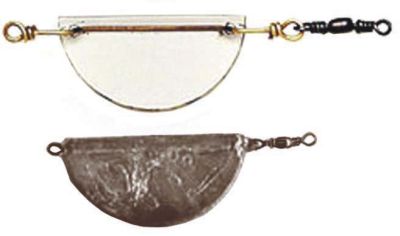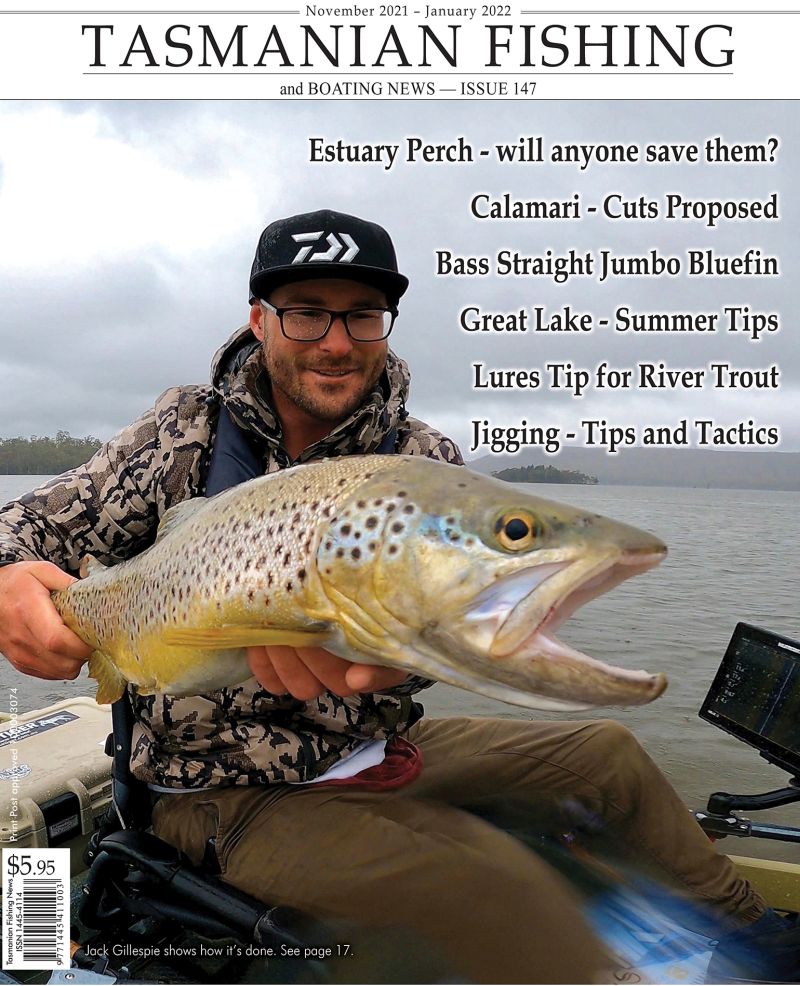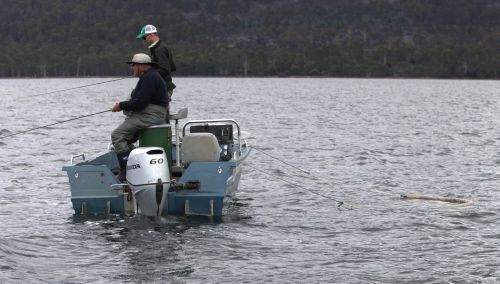 Presented from Issue 111, August 2014
Presented from Issue 111, August 2014
Anti-kinks are a unique piece of inexpensive tackle. They can be very useful used correctly. By definition they are design to stop your line twisting and developing ‘kinks’ which are the result of line twist.
As a rule I tend to go by the KISS principal. Keep It Simple Stupid. That is to have as little clutter as possible on my line at all times. Line tied directly to the lure or snap and that’s it. But there are times when it is necessary to use an anti-kink.
There are several different types, mostly plastic for want of a better word, although there are weighted lead, aluminium and brass version floating around but these tend to be older styles. All are designed to act as a keel and track straight through the water. All are shaped like a semi-circle or half-moon probably the best description.
The lead version served to purposes. Firstly to stop line twist and secondly to get your lure down deeper. These are effective although handling lead directly is not recommended.
Plastic style anti-kinks generally come in two styles, ones with swivels and those with three to four small holes through the flat side of the keel. This style with the holes is basically pointless. You thread the line through the anti- kink and slide it approximately 40-50cm up the line and tie on your lure using your preferred rigging method. If you have a lure that is spinning, for whatever reason and we will cover this shortly, it will allow your line to twist up behind the anti-kink until it builds enough pressure and then it will begin to spin itself leaving you wondering what you did wrong.
The only style of anti- kink to use is the fully optioned variety; a solid wire through the backbone or flat edge of the keel with a loop or eye at one end and a swivel protruding from the other.
The correct way to attach the anti-kink to the line is with the eye end facing your reel and the swivel end facing your lure. Tie approx. 50cm of line to the swivel and the other end attach to your lure or snap swivel as preferred. A snap swivel is ideal for easy changing of lures.
As mentioned in opening I would recommend not using an anti-kink unless necessary so let’s cover a couple of scenarios that may require the use of a keel. Tassie Devil style lures are fantastic and affordable lures that work extremely well out of the packet.
There no need to add any extra action, you attach them to your line and cast away or troll the lake. Their inherit design which gives then this great wounded baitfish type action can also cause them to spin if fished too fast.
Now by too fast we are talking at speeds unlikely used to catch fish anyway. So where would we see this occurring. Fast flowing water in a river is the usual suspect. Overseas Tassie Devils are used to catch migrating salmon in big fast flowing rivers. There they are let flutter down the current bouncing off the bottom and being hit by stationary fish in fast water. Locally we would cast a lure across a stream or river Lure action is great for the initial part of the retrieve but then as it hits the current mid river a great deal of speed is added. This can cause line twist. It’s in the situation I would recommend using an anti-kink. The line behind the keel can spin and the swivel will allow this to happen without line twist moving forward of the anti-kink.
Kids. They are impatient and love to change lures. A lot. There’s nothing better than spending an afternoon on the water with the little tackers but they do like to change colours very often. While trolling you are moving at 4kph on average let’s say. This is fine and a good speed for catching trout. You can do this all day long and never see one loop anywhere. If the little ones are cranking in a lure every five minutes to put on a pink one or a green one or a spotty one, each time they do so they are multiplying the trolling speed by about five times. This will without doubt cause line twist. If you’re fishing with kids an anti-kink can allow for many hours of tangle free fishing.
Spinners. The locally produced Ashley spinners are deadly on the humble trout. They are also deadly at creating line twist of you are not set up properly. I like to keep line light as always. This will twist easier than thicker heavier line but that won’t catch as many fish either. Ashley’s or devons as they are also known come in left and right spinning varieties which are a Godsend. But as an angler you must be aware of timing and change regularly and at even and short time gaps to keep everything in order. I’m not so regimented in that approach so I will always use an anti-kink when fishing a devon spinner. Plus as a little tip fish these things fast. The trout can’t resist them. Again rig the anti-kink with the swivel facing the lure.
Spoons. While out of favour a little these days are very effective lures. They are used extensively in New Zealand but again used to flutter in fast water. Here we use things like Wonder Wobblers and Pegrons as a cast and retrieve lure or trolling to a lesser extent. I used to favour a couple of spoons back in the Sorell days. While they caught fish and rainbows in particular they were inherently prone to twisting line in an instant, one large spoon was dynamite at both landing fish and destroying a spool of line. It was probably my first real experience with the positive effects an anti-kink can have in a set up.
Fly Dropper. I have seen people rigging a fly dropper to the anti-kink but personally I wouldn’t recommend it. The fly could engage the line behind the keel and prevent the swivel from doing its job. If you feel a fly dropper is necessary and if that’s what gives you confidence, and confidence is the best lure in the tackle box after all, then I would suggest adding a small swivel about 20cm above the keel and adding the dropper here. If spinning with this rig I would shorten the line to the lure to 40cm to assist with casting.
I hope those few tips help you land a few more fish. Never let a situation prevent you from fishing a given piece of water. Adapt to it and tackle it the correct way and you’ll find a few more fish on the end of that line. Keep in minimal where you can but use what we have at our disposal to help you fish effectively when necessary.
Justin Causby




